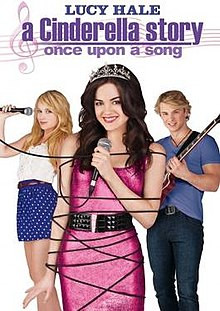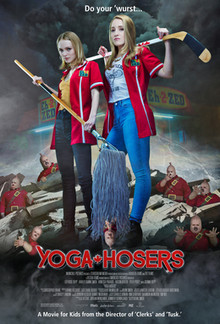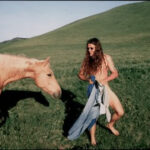[
Venturing back into the realm of fairytale retellings, we revisit the “A Cinderella Story” series, this time tuning into “A Cinderella Story: Once Upon A Song.” After a considerable hiatus, it’s time to dissect this musical iteration, a film that manages to be both delightfully watchable and frustratingly flawed, maintaining the series’ intriguing balance. This particular installment held a unique intrigue, largely due to its unfamiliarity – absent from Disney Channel’s rotation thanks to its lead not being a Disney star. Contrary to initial worries, this unfamiliarity proved to be a strength, making it a more compelling subject for review. While a missed opportunity to title it “Yet Another Cinderella Story,” this 2011 release, only three years after its predecessor, retains the same director and writers, ensuring a consistent, if not evolving, vision.
What sets “Once Upon A Song” apart and makes it ripe for discussion? Let’s delve into the melody and discord of this modern fairytale.
A Musical Overture with a Modern Beat
Right from the outset, “A Cinderella Story: Once Upon a Song” distinguishes itself with a vibrant musical fantasy sequence. This opening is arguably more captivating than previous installments, more elaborate in its visual presentation, even if its initial vibe does echo a hint of “California Gurls.” However, it’s the lyrical content that truly grabs attention, particularly a bold line delivered with unexpected sass: “I got high heel stilettos, and I’m kicking in doors, and kissing your ass ain’t what my lipsticks for.” This opening immediately signals a slightly edgier tone for this Cinderella narrative, promising a protagonist with a bit more bite.
[ Image depicting the movie poster for “A Cinderella Story: Once Upon a Song”, showcasing Lucy Hale and Freddie Stroma.
Image depicting the movie poster for “A Cinderella Story: Once Upon a Song”, showcasing Lucy Hale and Freddie Stroma.
We are then introduced to Katie, portrayed by Lucy Hale, our Cinderella figure. Quickly, we meet the archetypal dysfunctional family: a brother designed for minor chaos, and the stepmother, Gail, played by Missi Pyle. Pyle’s attempt at a Southern accent, however, lands on the side of caricature rather than character depth, a slightly jarring note in the ensemble. Gail’s ambition is quickly established as she maneuvers her way into enrolling Luke, the son of a record label president, into her performing arts academy. Luke, our Prince Charming, initially presents as somewhat personality-deficient, a common trope in teen romance. Katie, showcasing early initiative, manages to slip her demo CD into Luke’s father’s bag, a hopeful, if improbable, leap towards her musical dreams.
The narrative swiftly populates the scene with familiar archetypes, including Luke’s best friend, mirroring the sidekick dynamic from previous “Cinderella Story” films. While these recurring elements provide a comfortable familiarity, they also tread dangerously close to repetitive storytelling. A brief, bizarre interlude with Gail and her guru, featuring the memorable instruction “Release that butt,” adds a layer of quirky humor, before we’re pulled back into the domestic drama of Katie’s household.
Domestic Disharmony and Unexpected Encounters
A dinner scene further solidifies Gail’s villainous persona as she laments her “ungrateful” children, extending her displeasure even to the less-evil stepsister, Bev. A moment of unintentional racism arises with a comment about a “random table-cloth wearing Asian,” corrected to “Indian,” highlighting a somewhat clumsy attempt at humor that falls flat. Bev’s aspirations to a recording contract are met with Gail’s brutal honesty about her lack of singing talent, a harshness that, paradoxically, makes Gail a more compelling, if not sympathetic, character.
[ Promotional poster for the movie “Yoga Hosers” contrasting with the lighthearted tone of “A Cinderella Story: Once Upon a Song”, hinting at diverse roles of the actors.
Promotional poster for the movie “Yoga Hosers” contrasting with the lighthearted tone of “A Cinderella Story: Once Upon a Song”, hinting at diverse roles of the actors.
A particularly bizarre and uncomfortable scene unfolds as Victor, Katie’s stepbrother, steals her clothes while she showers and locks her out in just a towel, escalating to removing even that. This scene veers into unexpected territory for a PG-rated film, culminating in Katie’s desperate attempt to cover herself with a welcome mat just as Luke arrives. Surprisingly, Luke’s reaction is remarkably nonchalant, accepting Katie’s explanation with an unusual level of chill. This unexpected reaction is a welcome departure from typical contrived romantic comedy scenarios.
Simultaneously, in a somewhat awkwardly edited sequence, Gail receives a call from Guy Morgan, Luke’s father and record label president, who expresses enthusiasm for the demo CD. Cutting back and forth with Katie and Luke’s conversation, Luke’s line, “That’s not complicated. That is a gift from god,” in response to Katie’s welcome mat predicament, comes across as unintentionally creepy out of context.
Deception and Disguise in the Spotlight
Gail’s scheme unfolds as she presents the demo as Bev’s work, a plausible deception since Guy Morgan hasn’t heard Bev sing. This plot point introduces a semblance of logic, a rarity in such films, adding a layer of intrigue. Gail’s plan involves Bev lip-syncing to Katie’s voice at an upcoming showcase. A brief, suggestive exchange between Gail and Bev hints at the film’s consistent pushing of its PG rating boundaries.
Forced exposition reveals Gail’s backstory – her attempt to place Katie in foster care after her father’s death to avoid appearing callous. This adds a layer of backstory, though it hardly softens her villainous edges. The narrative then steers towards the inevitable dance, a staple of Cinderella stories, with Katie planning to attend in disguise. A friend character is introduced, primarily serving a functional role with minimal personality.
[ Close-up movie poster of “A Cinderella Story: Once Upon a Song” highlighting Lucy Hale as Katie and Freddie Stroma as Luke in a musical setting.
Close-up movie poster of “A Cinderella Story: Once Upon a Song” highlighting Lucy Hale as Katie and Freddie Stroma as Luke in a musical setting.
On the night of the dance, Katie is tasked with babysitting Victor, further emphasizing his disruptive nature. In a brief comedic aside, Gail’s guru is revealed to be only partially Indian with a Jersey accent, a joke that feels somewhat dated and inconsequential. The Bollywood-themed dance arrives, and Katie’s “disguise” – a veil – strains credulity. Despite minimal facial coverage and previous face-to-face encounters, Luke fails to recognize her. This stretches the bounds of believability, even within the fairytale logic of the film. Even Gail manages to recognize Bev under a veil, ironically making her seem more perceptive than the supposed romantic lead.
To create a diversion, Katie’s friend initiates a Bollywood dance-off with Gail, leading to an extended dance sequence that, while visually vibrant, feels largely extraneous to the plot. This prolonged interlude momentarily sidelines the central narrative, before Katie finally gets a moment to sing to Luke. When Gail is humiliated and retreats home, Katie’s rush to get back before her is anticlimactic, ending with a mere warning from Gail, rendering the urgency somewhat pointless.
Misunderstandings and Musical Truths
The day after the dance, Luke’s search for the veiled girl feels drawn out, lacking a clear “glass slipper” equivalent, unless Katie’s voice itself is meant to serve that purpose. A Scooby-Doo-esque door chase scene in a music class adds to the film’s increasingly quirky, almost farcical, tone. Luke stumbles upon Katie recording Bev’s lip-sync track, leading him to mistakenly believe Bev is the singer from the dance, despite the obvious facial mismatch and previous encounters with Katie. This plot contrivance, while frustrating, does introduce a more complex dynamic to the narrative.
Luke and Bev’s subsequent date, with Katie feeding Bev lines via text, provides some comedic moments, albeit often reliant on predictable misunderstandings. A darkly humorous moment arises when Katie uses her grandmother’s supposed death as an excuse to end the date early, a joke that lands with an unexpected edge. Luke’s visit to Bev the next day leads to another encounter with Katie, further straining the audience’s patience with his continued obliviousness.
[ Another poster for “Yoga Hosers” placed after a scene description, playfully referencing the unexpected turns in the review and the actor’s filmography.
Another poster for “Yoga Hosers” placed after a scene description, playfully referencing the unexpected turns in the review and the actor’s filmography.
Victor, surprisingly tech-savvy, is revealed to have installed cameras throughout the house. Bev and Victor’s dialogue, including veiled innuendo, continues the film’s subtle flirtation with more mature themes. Victor’s witnessing of Gail’s mistreatment of Katie triggers a sudden change of heart, transforming him from tormentor to ally. This abrupt shift in character feels unearned and somewhat jarring, especially considering his earlier cruel behavior. Despite the attempt at a heartwarming moment between Victor and Katie, the memory of his earlier actions, like locking her out naked, lingers uncomfortably.
Bev, in a brief moment of vulnerability, admits her nervousness about the upcoming showcase, hinting at a deeper character beneath the surface. However, this development remains largely unexplored. At the showcase, Victor’s intervention exposes the deception, revealing Katie as the true singer. Luke, surprisingly unfazed, immediately embraces the truth and starts filming Katie’s performance. Katie is propelled onto the stage, and the film rushes towards its conclusion.
Gail’s downfall is swift, and Katie gets her encore and romantic resolution with Luke. Their connection remains underdeveloped, but by this point, deeper character development seems secondary. The film wraps up rapidly, with Katie securing a record deal and a mid-credits scene featuring Gail waking up to deliver a final, humorous line referencing Jessica Simpson’s singing abilities. Bev tells her mother to give it a rest, bringing the narrative to an abrupt close. Bev’s character arc feels particularly shortchanged, with Victor’s redemption arc taking precedence.
Final Verdict: A Meh-lodious Mix
“A Cinderella Story: Once Upon a Song” is an uneven offering in the series. It feels narratively thinner, with a plot that hits predictable beats without significant depth. While it adheres to the Cinderella template, its connection to the core fairytale feels tenuous. The film also misses opportunities for richer storytelling and character development, and Luke’s prolonged ignorance of Katie’s identity is a significant contrivance.
However, its flaws are less grating than some of its predecessors, and it possesses a certain ironic charm. Its oddball elements, like the Bollywood dance number and surprisingly suggestive dialogue, contribute to its peculiar appeal. As with other films in the series, the acting is generally competent, with Lucy Hale proving a charming lead. The film’s weaknesses are less irritating, making it ironically enjoyable in its own quirky way. While the second half loses some momentum, it remains less tedious than previous installments. Ultimately, it’s a harmless, fluffy film that is more enjoyable than annoying.
Rating: Meh
In conclusion, “A Cinderella Story: Once Upon a Song” provides a mildly entertaining, if unremarkable, addition to the Cinderella cinematic universe. It’s not a standout, but it’s also not a complete misfire, landing firmly in the realm of “meh-lodious” entertainment. The series, surprisingly, continues to offer intriguing, if flawed, subjects for review.
[ Movie poster for “Yoga Hosers” signaling a shift in tone and genre for the next review, contrasting with the romantic comedy theme of “A Cinderella Story: Once Upon a Song”.
Movie poster for “Yoga Hosers” signaling a shift in tone and genre for the next review, contrasting with the romantic comedy theme of “A Cinderella Story: Once Upon a Song”.
Next up, a dive into the decidedly different world of “Yoga Hosers,” promising a stark contrast in cinematic experience.
See ya.

